Archives
- 2025-12
- 2025-11
- 2025-10
- 2025-09
- 2025-03
- 2025-02
- 2025-01
- 2024-12
- 2024-11
- 2024-10
- 2024-09
- 2024-08
- 2024-07
- 2024-06
- 2024-05
- 2024-04
- 2024-03
- 2024-02
- 2024-01
- 2023-12
- 2023-11
- 2023-10
- 2023-09
- 2023-08
- 2023-07
- 2023-06
- 2023-05
- 2023-04
- 2023-03
- 2023-02
- 2023-01
- 2022-12
- 2022-11
- 2022-10
- 2022-09
- 2022-08
- 2022-07
- 2022-06
- 2022-05
- 2022-04
- 2022-03
- 2022-02
- 2022-01
- 2021-12
- 2021-11
- 2021-10
- 2021-09
- 2021-08
- 2021-07
- 2021-06
- 2021-05
- 2021-04
- 2021-03
- 2021-02
- 2021-01
- 2020-12
- 2020-11
- 2020-10
- 2020-09
- 2020-08
- 2020-07
- 2020-06
- 2020-05
- 2020-04
- 2020-03
- 2020-02
- 2020-01
- 2019-12
- 2019-11
- 2019-10
- 2019-09
- 2019-08
- 2019-07
- 2019-06
- 2019-05
- 2019-04
- 2018-11
- 2018-10
- 2018-07
-
It is now thought that tight binding of HMGB
2024-11-28
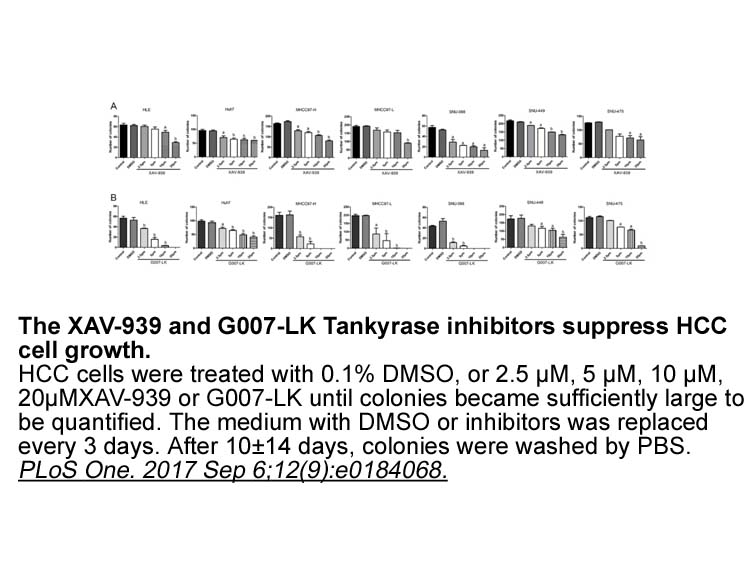
It is now thought that tight binding of HMGB to condensed chromatin may not be restricted to apoptotic cells. That HMGB proteins might actually be involved in the organization and/or maintenance of heterochromatic regions is suggested by the results of experiments analyzing the stable binding of the
-
At Johns Hopkins Aramco Health JHAH we started
2024-11-28

At Johns Hopkins Aramco Health (JHAH), we started an ASP in 2011 with an educational program of physicians and pharmacist. The program was enhanced mid-2012 with the following interventions: a re-designed antibiotic sensitivity report [2], intravenous to oral conversion program, vancomycin pharmacok
-
The Irbesartan Diabetic Nephropathy Trial enrolled
2024-11-28

The Irbesartan Diabetic Nephropathy Trial enrolled patients with type 2 diabetes, proteinuria of at least 0.9 g/24 h, BP >135/85 mmHg and moderate kidney impairment (creatinine 88 to 265 µmol/L in women or 106 to 265 µmol/L in men). Patients were randomized to receive irbesartan (titrated from 75 to
-
The apocrine sweat glands of the human axilla produce
2024-11-28
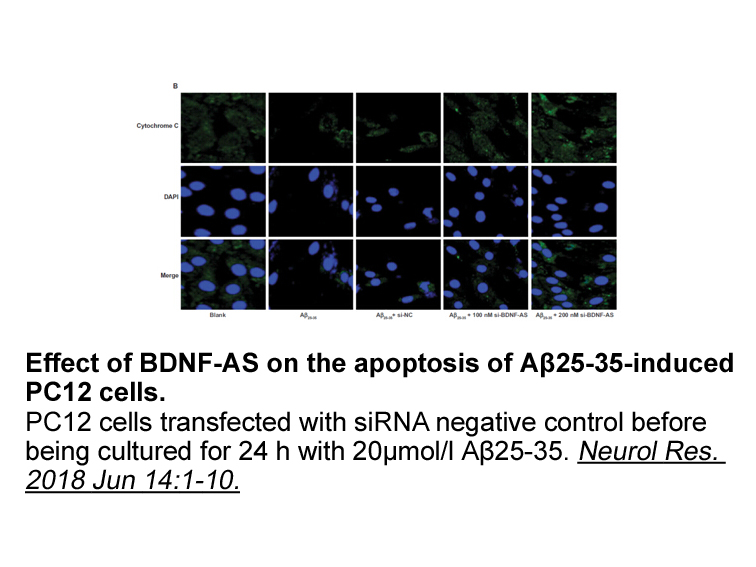
The apocrine sweat glands of the human axilla produce odor substances with pheromone functions whose nature corresponds to volatile steroids (Cowley and Brooksbank, 1991, Grosser et al., 2000, Sobel et al., 1999, Weller, 1998). These functions only begin with puberty, indicating that sex hormones st
-
br Conclusions The present data suggest that
2024-11-27
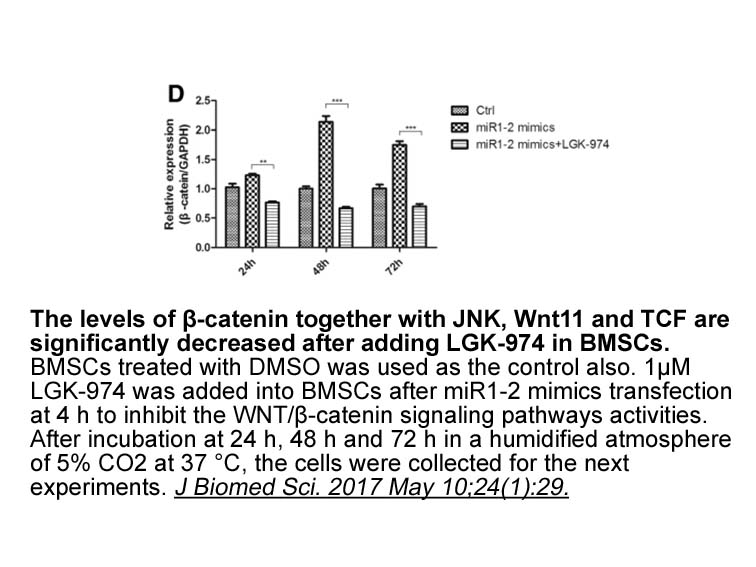
Conclusions The present data suggest that homeostatic balance of the cortical/hippocampal adenosinergic tone is necessary for normal working memory function and any deviation appears to impair performance – either as a consequence of A2AR under-activation when adenosine levels are reduced or due
-
Introduction Adenosine kinase ADK ATP adenosine phosphotrans
2024-11-27
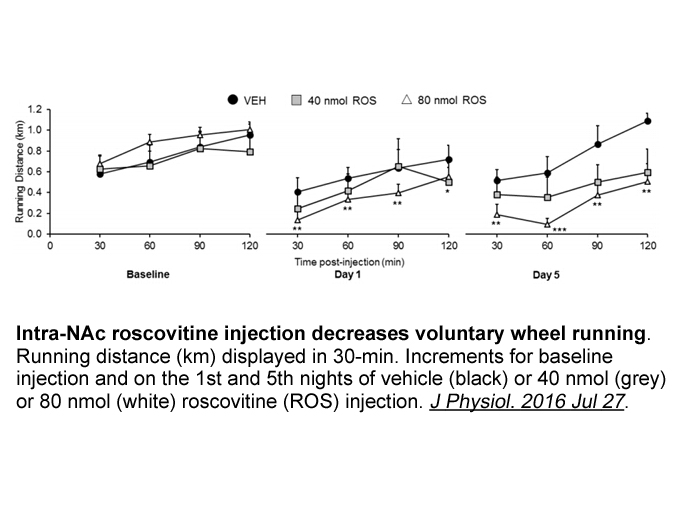
Introduction Adenosine kinase (ADK; ATP: adenosine 5′-phosphotransferase, EC 2.7.1.20), is isolated from yeast cells by Kornberg for the first time in 1951 [1]. ADK belongs to the ribokinase protein family and is one of the most abundant nucleoside kinases in mammalian tissues [2,3]. As the first i
-
INCB-024360 A borderline significant effect of women s
2024-11-27
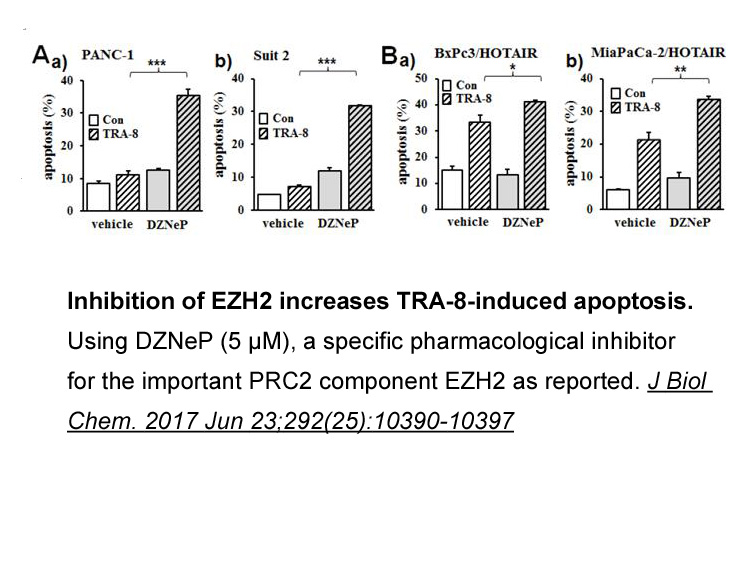
A borderline significant effect of women's age has been observed for ADA6 only. For ADA2 the proportion of the *1/*1 genotype is 69.4% in women aged ≤36 years vs. 66.9% in women aged ≥36 years (p=0.944). The proportion of ADA6*1 allele carriers is 32.6% in women aged ≤36 years vs. 49. 8 in women age
-
br Conflict of interest br Ethics committee
2024-11-27
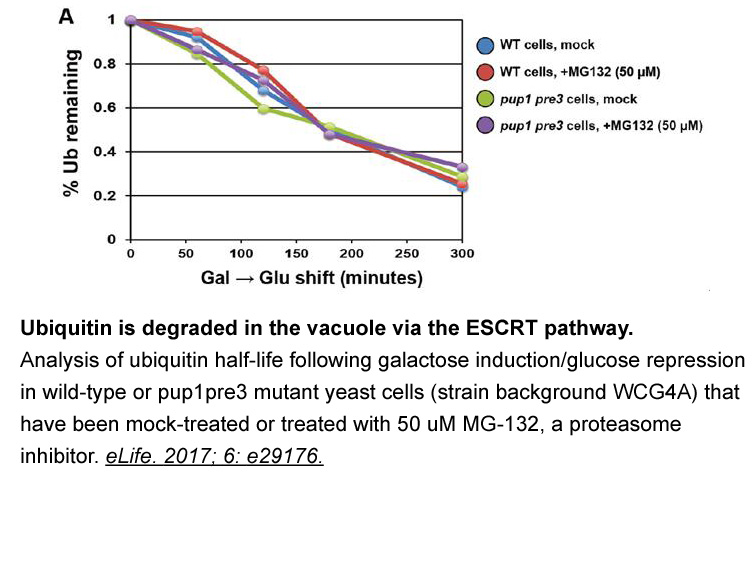
Conflict of interest Ethics committee Introduction Severe combined immunodeficiency due to adenosine deaminase deficiency (ADA-SCID) is characterized by impaired function and differentiation of T, B, and natural killer (NK) cells. Non-immunological abnormalities may also occur, including fa
-
Our published data showed that in mouse heart the
2024-11-27
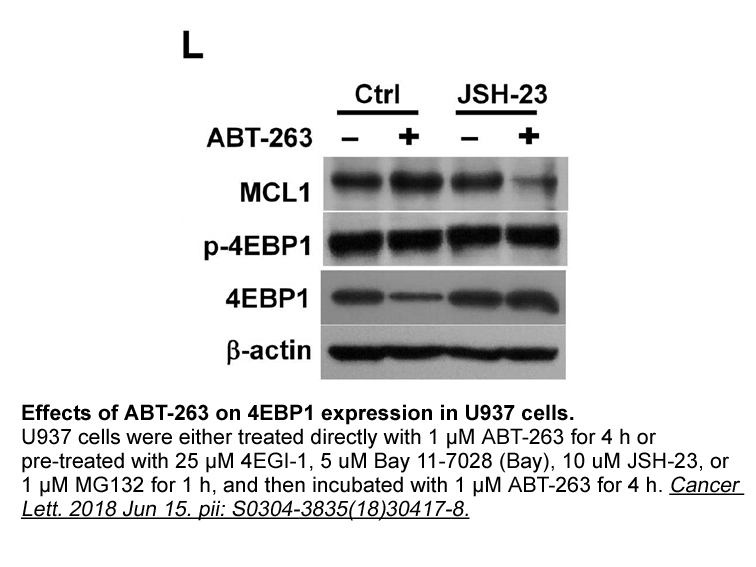
Our published data showed that, in mouse heart, the protein level of WDR1 was highest during the embryonic stage, but became progressively decreased to a constant level from birth to adulthood (Yuan et al., 2014), indicating an important role of WDR1 in embryonic heart development. However, function
-
Encouraged by this observation a systematic SAR study on the
2024-11-27
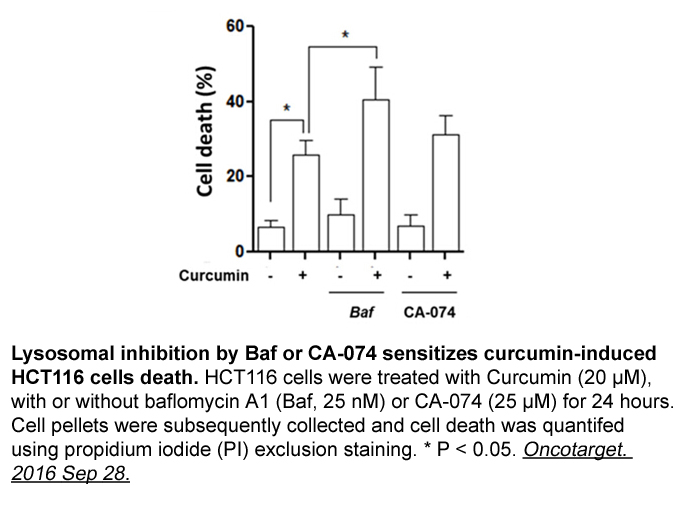
Encouraged by this observation, a systematic SAR study on the A ring -alkoxy was conducted as summarized in . The A ring methoxy-containing KRCA-0008 was proven an optimal substituent in terms of potency after all and its bigger size derivatives were detrimental in both biochemical and H3122 cellula
-
It has been reported that leukotrienes and their receptors e
2024-11-27
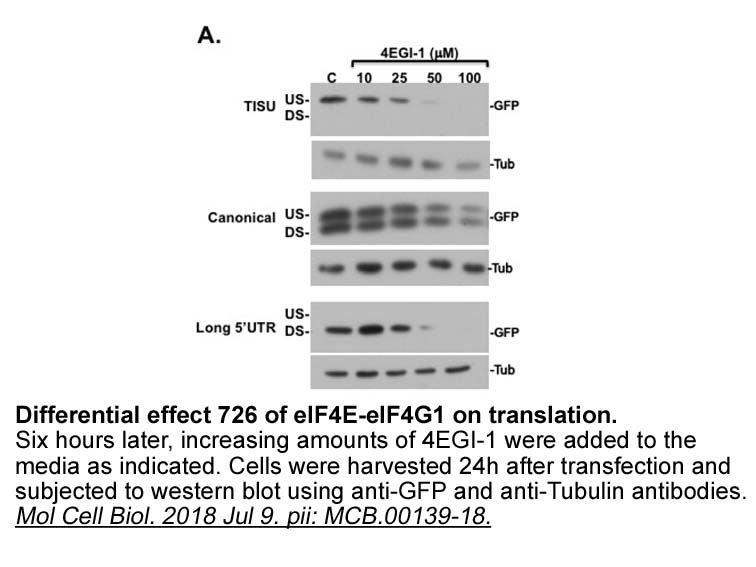
It has been reported that leukotrienes and their receptors, e.g. the cysteinyl leukotriene receptor 1 (CysLT1) may promote A-1331852 injury (Ding et al., 2007) and that increased 5-LOX expression and activity lead to production of brain-toxic molecules (Khan et al., 2010). However, differential eff
-
Drug resistance development often involves structurally un
2024-11-27
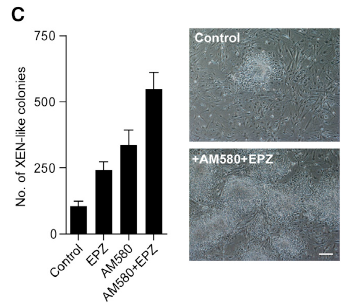
Drug resistance development often involves structurally un-related drugs and, specifically both conventional and targeted agents. IGROV-1/Pt1 SNOG mg are characterized by resistance to cisplatin and reduced sensitivity to inhibitors of EGF-R and MEK, the up-stream activator of ERK1/2, associated wit
-
Introduction Enzymatic browning degrades quality safety and
2024-11-27

Introduction Enzymatic browning degrades quality, safety, and nutritional values of various fruits or vegetable products. For example, the color of apple or potato is generally yellowish, representing freshness. However, they are extremely susceptible to enzymatic browning because of abundant polyp
-
br STAR Methods br Acknowledgments We thank
2024-11-27
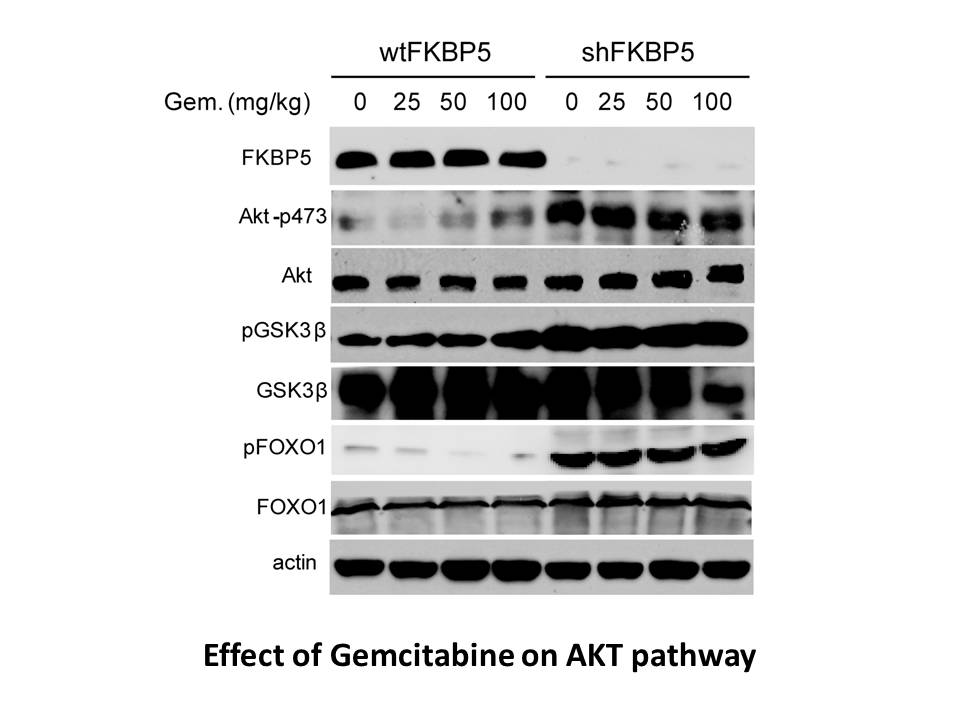
STAR★Methods Acknowledgments We thank Simcere Pharmaceuticals, Nanjing, China, for providing a rabbit anti-VEGF neutralizing monoclonal antibody. We thank Dr. Schlisio in the Ludwig Institute for Cancer Research, Karolinska Institute, for assistance with hypoxia assay. Y.C.’s laboratory is sup
-
br Role of AMPK in inflammation signaling Pro
2024-11-26

Role of AMPK in inflammation signaling Pro-inflammatory cytokines, such as interleukin (IL)-6 and tumor necrosis factor-α (TNF-α), activate Ikβ kinase (IKKβ), which phosphorylates IκBα, triggering the degradation of proteasomal IκB. This liberates active nuclear factor kB (NF-kB) to translocate i
15814 records 47/1055 page Previous Next First page 上5页 4647484950 下5页 Last page